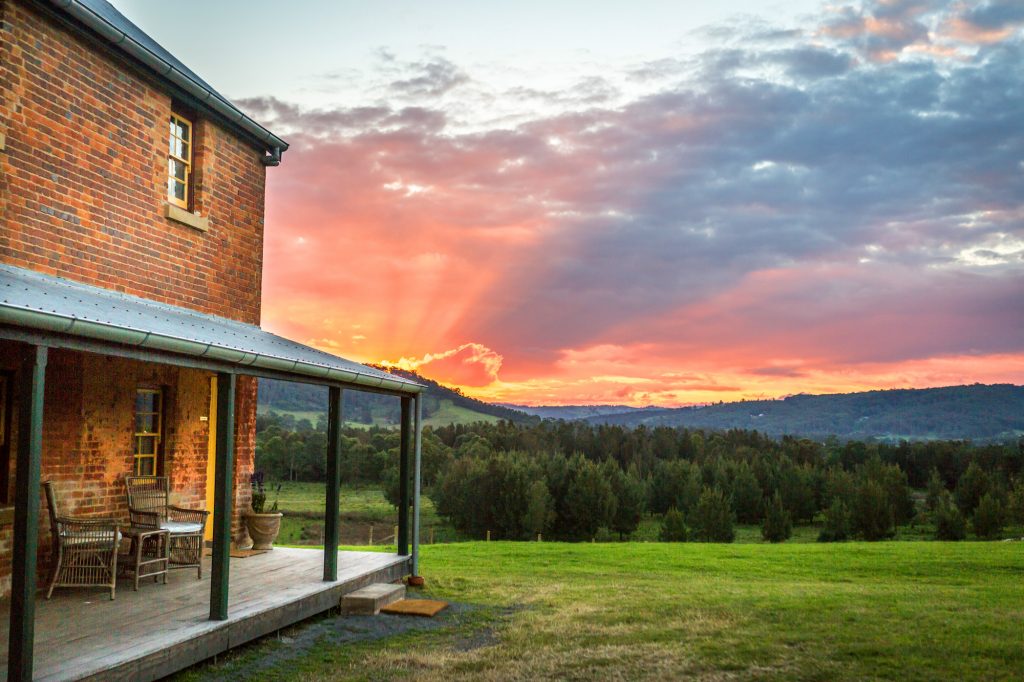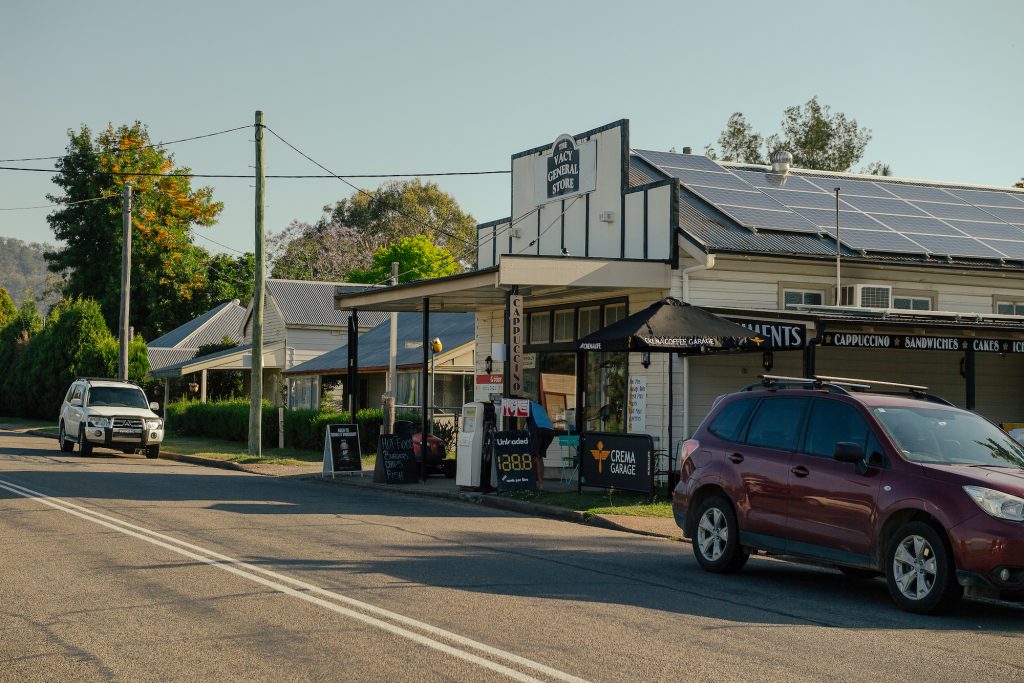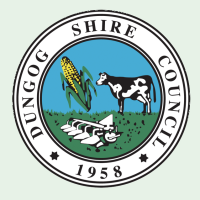Paterson
The village of Paterson is the earliest recorded settlement in the Dungog Shire. Paterson is 19 km north of Maitland, 61 km north of Newcastle and 183 km north of Sydney. It is situated on the Paterson River below its confluence with the Allyn.
In the early 1800’s Susannah Ward surrendered 90 aces of her estate for the purpose of establishing a town, and the settlers petitioned the Government for a wharf, which became the focal point around which Paterson grew.

The wharf was established in 1877 after local agitation. Although Paterson was the Hunter Region’s third town site to be surveyed (in 1833 after Newcastle and Maitland), it was not proclaimed as a town until 1885. The town became an important trading post for boats from Newcastle and Morpeth, and a market centre for farmers bringing produce from north of the town.
The Paterson Steamship Company was formed to facilitate this. Paterson developed rapidly, due to its importance as a port. Produce such as citrus fruits, tobacco, grains, grapes and wine was transported from the fertile Paterson Valley to Newcastle.





















As the years went on, ship building became prominent with two yards being established. However, river trade declined in the 1850’s as the road to Maitland was improved. The town continued to develop in spite of this, outgrowing its original survey site. Timber mills were established in the Paterson area in the 1870’s.
In the 1890’s, the building of the North Coast Railway further reduced the importance of the river trade and even though the railway eventually linked Paterson with Dungog, it brought few benefits to the town. Throughout the 1900’s agriculture was the major economic activity in the Paterson area. Paterson is today a small rural village with many points of historical interest. Tucker Park is a popular riverside family picnicing and play area.

